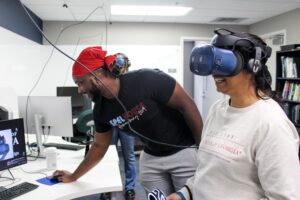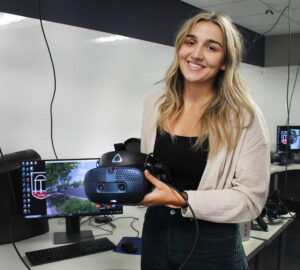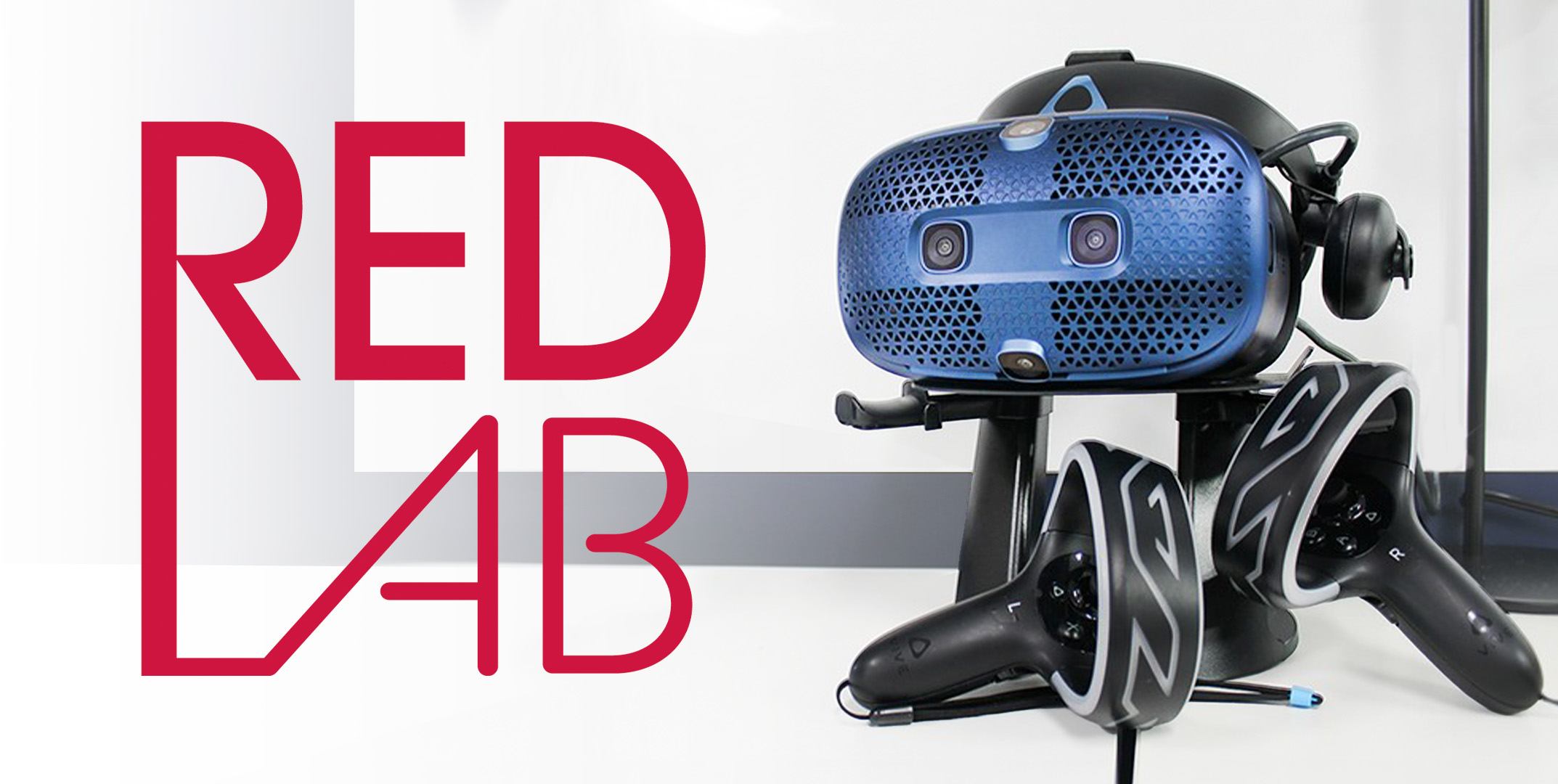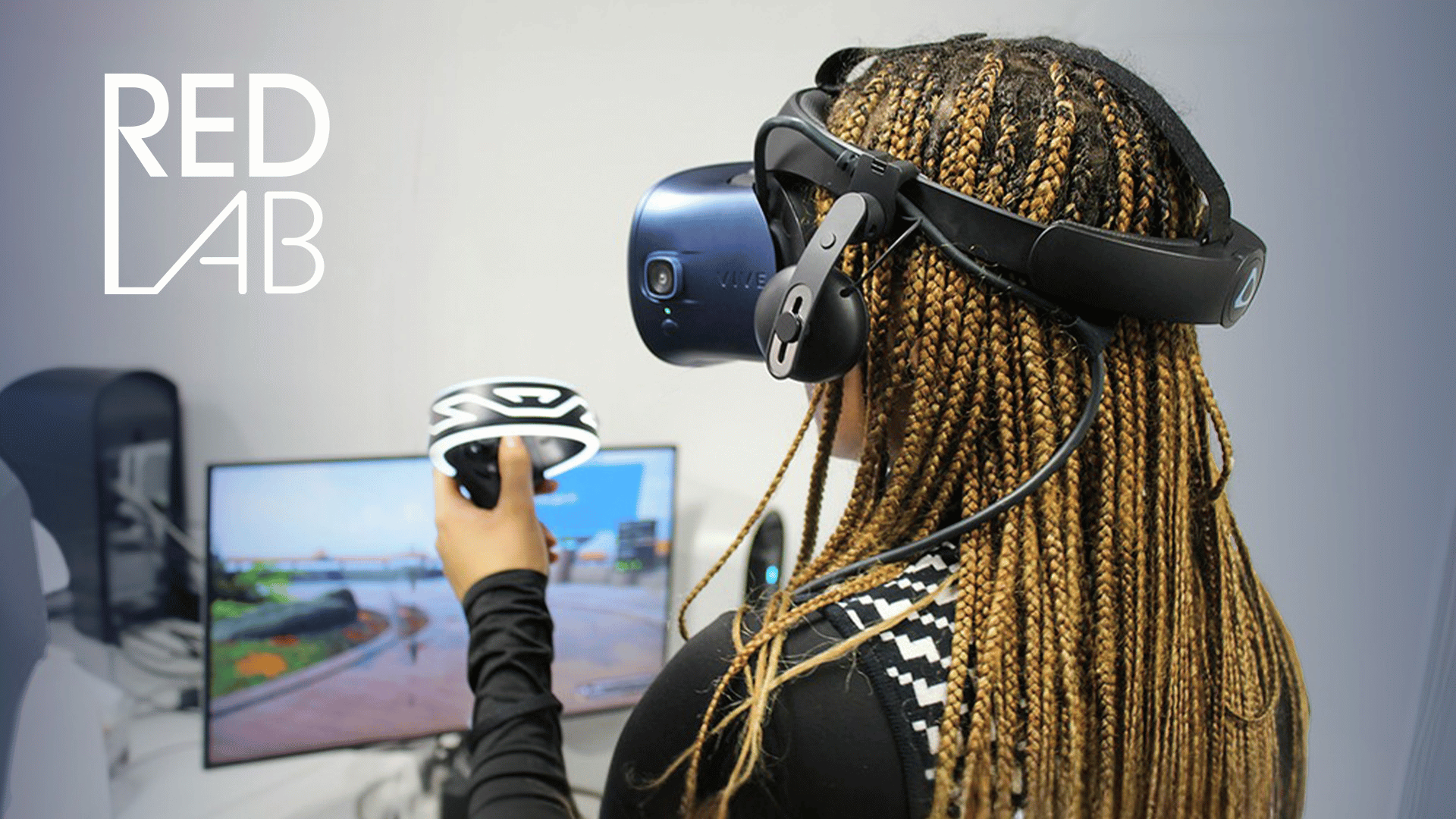Navigating a virtual world may seem like a scene from a science fiction movie, but for Jessica Fernandez, it is an integral part of her research at the University of Georgia College of Environment and Design.
Fernandez is an assistant professor of landscape architecture, and in 2022, she created the CED’s first-ever emerging technology laboratory, the REDLab, which uses virtual reality and forms of big data to understand how people respond to designed spaces. “RED” is an acronym for Relationships in Environment and Design.

Fernandez works with graduate students to plan research studies that incorporate these technologies, and all her students’ projects have garnered success.
“We have had three student studies come through the lab so far, and five more are currently underway,” said Fernandez, “and they will all result in the students publishing and presenting their work beyond our college, which is very exciting.”
Fernandez has always been passionate about creating spaces that promote positive thinking and a sense of well-being, and she is excited to see how her students’ research will contribute to the field of landscape architecture.
“I’ve always been interested in people,” said Fernandez, “so most of the research that I do is about people’s relationships with the environment. I’m inspired now to try and understand how our designs influence people’s mental health and well-being.”
The surrounding environment often greatly impacts mood and perceptions of space. For example, individuals might respond differently to a crowded environment compared to an environment with fewer people. Aisha Iyengar, a Master of Urban Planning student, is using the REDLab to understand how people’s perceptions are affected by specific stimuli in the environment.
 “Virtual reality allows me to simulate a streetscape environment that includes humans actively using the space,” said Iyengar. “This allows students to fully immerse themselves in a controlled environment for a consistent study environment.” By the end of Iyengar’s research study, she will have analyzed data from at least 100 participants.
“Virtual reality allows me to simulate a streetscape environment that includes humans actively using the space,” said Iyengar. “This allows students to fully immerse themselves in a controlled environment for a consistent study environment.” By the end of Iyengar’s research study, she will have analyzed data from at least 100 participants.
Fernandez is very happy with how the lab has grown in just a short amount of time, and she is looking forward to the lab’s future.
“The lab has grown by itself through a shared passion for what we do,” said Fernandez. “The students are sharing and creating knowledge, and they are excited about the future of their research.”


